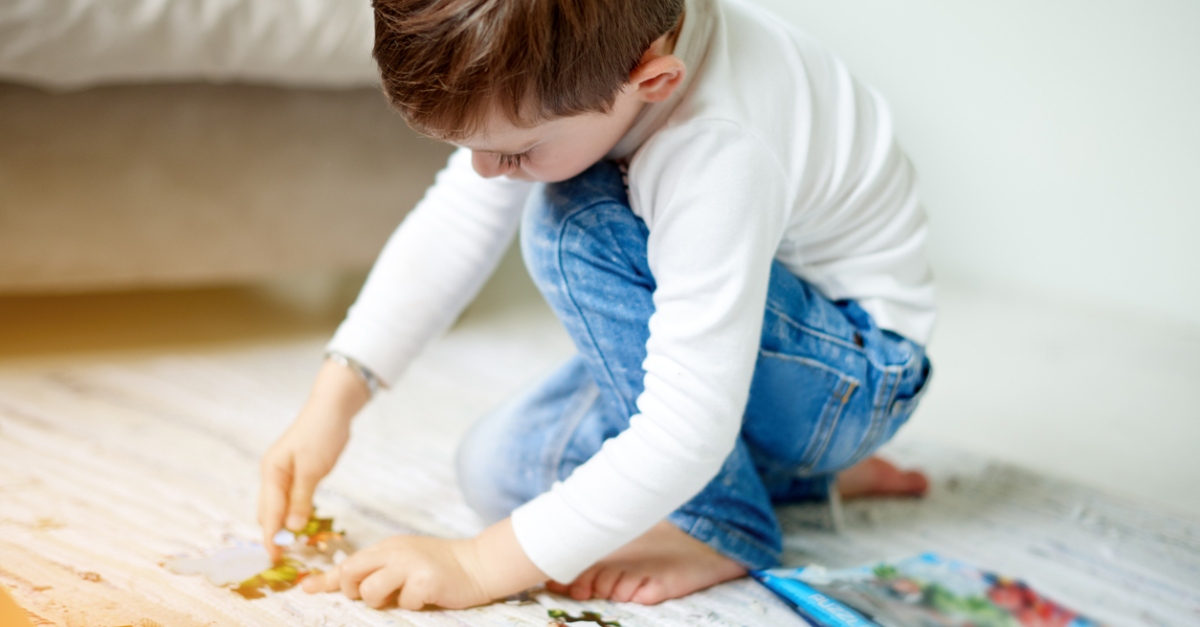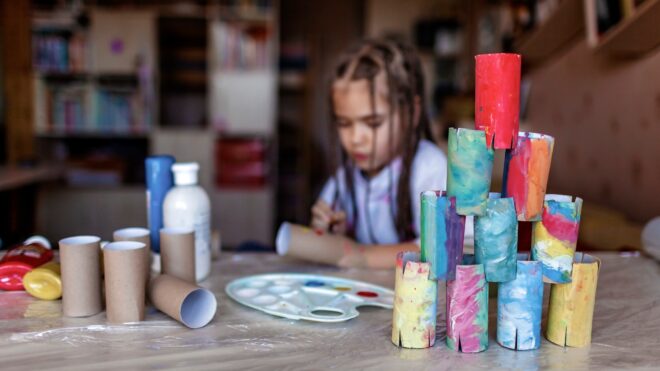
Careers in science, technology, engineering, and math (STEM) are on the rise, and tech education company iD Tech reports that it's estimated that 3.5 million STEM jobs will need to be filled by 2025. However, as iD Tech notes, “When you take that a level deeper, people aren’t suited with the skills required of STEM jobs because STEM education isn’t readily available for many. Nor is it something being ingrained or even presented early enough — or often enough — in the lives of today's children.”
Chloe Varelidi, founder of architectural play set company Follies, shares with LittleThings the importance of building a STEM interest for kids, saying, “STEM is really fun! Contrary to the perception of math or science being boring or hard topics, if children are given the right tools, these topics can open worlds of wonder for them. Another reason STEM is important especially for girls is that the proportion of women in STEM fields actually declined between 1990 and 2019. Women hold only about a quarter of computing roles and 15% of engineering jobs, according to the US Census Bureau. Moreover, even though girls and boys are equally enthusiastic about STEM fields, what happens after the age of 7 is we start observing a gender gap. Girls face more bias with regards to their abilities and often lose confidence in STEM fields like math and engineering.”
Gabriella Seoane, MS, OTR/L, and pediatric occupational therapist for JIGGY Puzzles, adds that it’s important to focus on STEM topics for kids because "STEM offers children a variety of experiential learning opportunities to enhance certain skills such as executive functioning, analytical thinking, critical thinking, social interaction/teamwork, cooperative play, and of course academic skills to solve a problem."
So how can we foster an interest in STEM in children, particularly over the summer when school is out?
Seoane notes, “The change in routine from school to home over summer months can be a challenge for many families. Participating in STEM enrichment activities over summer and keeping kids’ brains busy is a must for healthy development to continue refining the skills they’ve learned.”
Varelidi says, “The summer months are a great opportunity to engage children in interest-driven projects. STEM fields easily lend themselves to a variety of passions your children might have, from creating an animated Scratch project about their favorite character while learning how to code to building an ecosystem for their backyard with their Follies, like we recently did at the Smithsonian Folklife Festival.”
Ready to take on STEM activities you can do at home this summer with your kids?
Varelidi shares, “I always love starting STEM or STEAM (A stands for Art) projects with an open-ended question and a variety of materials for kids to choose from. For example, let's say we want to introduce Earth sciences, we can ask, 'How would you use your Follies to get from Earth to the Moon? What would you find on your way there?' A question helps our little kids to think critically, not just follow instructions. As they start to dream up a rocket ship to go between Earth and the Moon, you can help them by asking questions like, Is the moon on top of, next to, or below the Earth? How do we see the Moon on Earth? How does it travel across the sky?”
She then instructs parents to get involved as a collaborator. “Work together with your child to figure out how to build your creation. We suggest building an Earth base, a Moon base, and a rocket ship. Next, have them start attaching pieces together to create it,” she explains.
“If it starts to not look right to them, that’s OK! Encourage them to take a few pieces away and try building it a different way. That’s some extra engineering skills right there. Make sure you use the dry erase markers to decorate your builds.”
Seoane shares three additional activities:
1. Crayon Making
Materials needed: broken crayons, silicone mold, baking sheet
Directions: “Preheat oven to 275. Utilize broken or break crayons and peel them. Insert crayons into mold in a variety of assortments and place on baking sheet in the oven. Allow crayons to melt for approximately 10 minutes. Remove from [the oven] and allow to cool completely. Once cooled, pop them out and color! Appropriate for elementary+.”
2. Sensory Bottle
Materials needed: empty water bottle, 1 tablespoon glitter, vegetable oil, warm water, 2 to 3 drops food coloring, funnel, glue
Directions: “Fill half the bottle with warm water. Add food coloring and experiment with mixing colors. Using the funnel, add glitter of choice. Fill the remaining half of the bottle with vegetable oil. Squeeze glue around rim of bottle and secure lid, allow to dry. Once dry, tilt the bottle upside down and watch the science of density principles at play! Appropriate for elementary+.”
3. The Human Knot
Needed: 4-plus friends and/or family members
Directions: “All participants stand in a circle, reach out and cross arms to grab another person’s hands, essentially making a spider web of arms. Point of the game: problem-solve to untangle yourself and your friends!”

In addition to STEM activities, puzzling is another great activity to do with your kids over the summer, according to Seoane. “Although there are many benefits of using puzzles to encourage healthy development in children, many of these benefits can be sorted into three main categories: executive functioning (cognitive) skills, motor skills, and social-emotional skills,” she says.
She further breaks it down:
Motor skills: “Puzzles offer children a variety of opportunities for fine motor development through manual dexterity skills. Manual dexterity is defined by someone’s ability to use their hands in a controlled manner through hand-eye coordination to complete a task. Puzzles also encourage grasp refinement and visual-motor skills, preparing kiddos for handwriting.”
Social-emotional skills: “Due to their complexities, puzzles also help teach patience, resilience, and self-esteem, offering numerous opportunities to self-regulate when faced with a challenge. When completed with another child, kids learn the value of teamwork and turn taking. Once a puzzle is complete, kids gain a better sense of why perseverance is important, as well as taking pride in their accomplishments.”
By engaging your kids in fun and educational activities now, you might just be raising and sparking ideas in the next industry leader!







